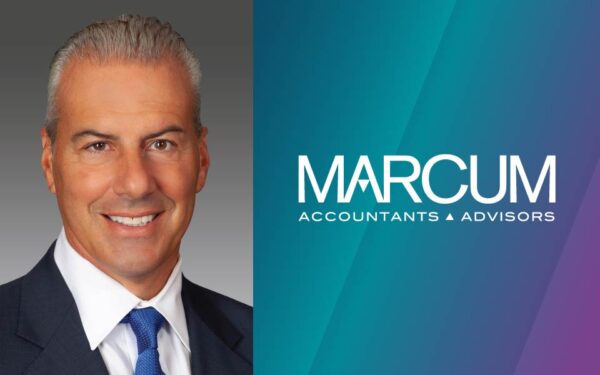How Construction has Leveraged Economic Relief Programs to Survive COVID-19
By James Miller, Partner, Assurance Services & James Wiedemann, Senior Manager, Assurance Services
The impact of the COVID-19 pandemic on the construction industry as a whole has been far reaching. A large array of jobs ceased operation due to safety concerns, as the industry at large came up with its own version of the “new normal” for safety protocols on job sites. While the construction industry has been deemed essential amid the ongoing business shutdowns and interruptions, various jobs have been cancelled in their entirety due to cuts in funding. The pandemic has left construction companies trying find new jobs in an economy that is still in-part shut down, all the meanwhile trying to figure out what additional costs will arise from the new social distance and COVID-19 protocols on job sites. With much uncertainty remaining, many contractors have turned to the financial relief included in the Coronavirus Aid, Relief, and Economic Security (CARES) Act, which established loan programs to help businesses pay employees and overhead costs, while maintaining operations.
Paycheck Protection Program
The most prominent component of the CARES Act is the Paycheck Protection Program (PPP), which provides forgivable loans from the Small Business Administration (SBA) to fund eligible business expenses, including payroll and certain overhead costs. Initially, the PPP provided contractors with funding for eight weeks of payroll and overhead (later extended to 24 weeks), a lifeline for contractors. However, the constant updates to the PPP program created unique challenges for companies, as well as more uncertainty. The first uncertainty affected companies that applied for a loan and provided the required certifications at the time of application. Subsequent to contractors obtaining the funds, guidance was released stating that, for loans greater than $2 million, the certifications will be subject to audit by the SBA. The uncertainty of what the SBA would request to further support a company’s stated liquidity needs and overall financial position had many companies scrambling in some cases to repay the loan. Others contractors who kept their loans are dealing with the uncertainty of what will be audited, despite many of them being in the position of needing the support.
Within the construction industry, many surety and bonding companies have assisted their clients by providing guidance on the surety’s ability to extend surety credit, and the reliance of their clients ability to retain profitability, equity, working capital, cash flows, and overall leverage ratios. This guidance, along with contractors documenting the shut-down of jobs, slow-down of funding, and other obstacles, has provided some direction on how contractors can support their certifications if selected for audit.
The second uncertainty lies with the PPP loan forgiveness provision, which is the highlight of this relief program. As part of the PPP, a company is allowed use the PPP funds for eligible expenses over the covered period. At the end of the covered period, the PPP program allows the contractor to apply to the bank for forgiveness of eligible expenses up to the loan amount.
The principle goal of the PPP program was to have companies bring back employees who were either laid off or furloughed. Contractors planned on replenishing employee levels, in some cases in lieu of projects being shut down, to meet the full-time equivalent thresholds within the PPP loan forgiveness provisions, for the original 8-week covered period.
Since the introduction of the PPP, many of the forgiveness provisions, including terms included in PPP loan agreements with banks, have been clarified or modified. The recent changes published by the SBA in June 2020 included providing an extension for the covered period of forgiveness to 24 weeks, allowing companies to submit a loan forgiveness application any time on or before the end of the covered period. For some contractors, the extension provided additional relief, as many were facing projects being shut-down, impairing their ability to spend all of the PPP funds.
There are many other items within the calculation that require specific attention to detail to ensure maximum forgiveness. From a timing standpoint, contractors are working to have their loans forgiven by the end of their fiscal year, to avoid presenting a loan on the financial statements. Managing the financial statement impact and the tax consequences of loan forgiveness will be another challenge, as what started out as a “tax-free” forgivable loan has since been modified to being non-deductible, in essence taxable.
Main Street Lending Program
While many entities took advantage of the PPP money, there is also a rush to obtain financial assistance through the Main Street Lending Program (MSLP). The MSLP is a $600 billion fund providing for new loans, or the increase of existing loans, to smaller and medium-sized businesses unable to access the PPP or that require more support in addition to the PPP.
There are three separate borrowing facilities for Main Street loans, each with different eligibility requirements and loan terms, primarily based on a multiple of Earnings Before Interest, Taxes, and Depreciation (EBITDA). The MSLP loans are not a forgivable; however, they do have favorable terms providing for deferred payments and extensions with manageable interest rates. Borrowers are required to make certain certifications. There are no requirements to maintain employment levels; however, the MSLP states the borrower should make “commercially reasonable efforts” to retain employees during the term of the MSLP. The MSLP application process has not officially opened, as banks are still working to meet MSLP eligibility requirements and for details of the application process to be finalized. There will be further updates to the MSLP, however this should provide contractors with additional working capital funds if eligible.
Looking Ahead
As we look toward the future there are still a large number of questions that remain unanswered. No one knows when this pandemic will come to an end, but we need to keep planning for tomorrow today. With the safety of all employees in mind, companies need to determine what procedures need to be in place for the everyday work environment. With more employees working from home, management should determine what procedures should be adjusted to ensure proper controls are in place. On the job sites management must determine what the additional costs related to COVID-19 are and how that’s accounted for in the bid proposals and/or change orders. Management should follow up with all owners on future work to ensure that any changes to the current backlog are accounted for immediately so that new opportunities can be followed up on. Management should also be in touch with their trusted advisors (banking, bonding, accounting, etc.) in order to assist with issues as they arise. We all hope that a year from now we can look back and know we made the best decisions we could have made as we continue into the future.




















